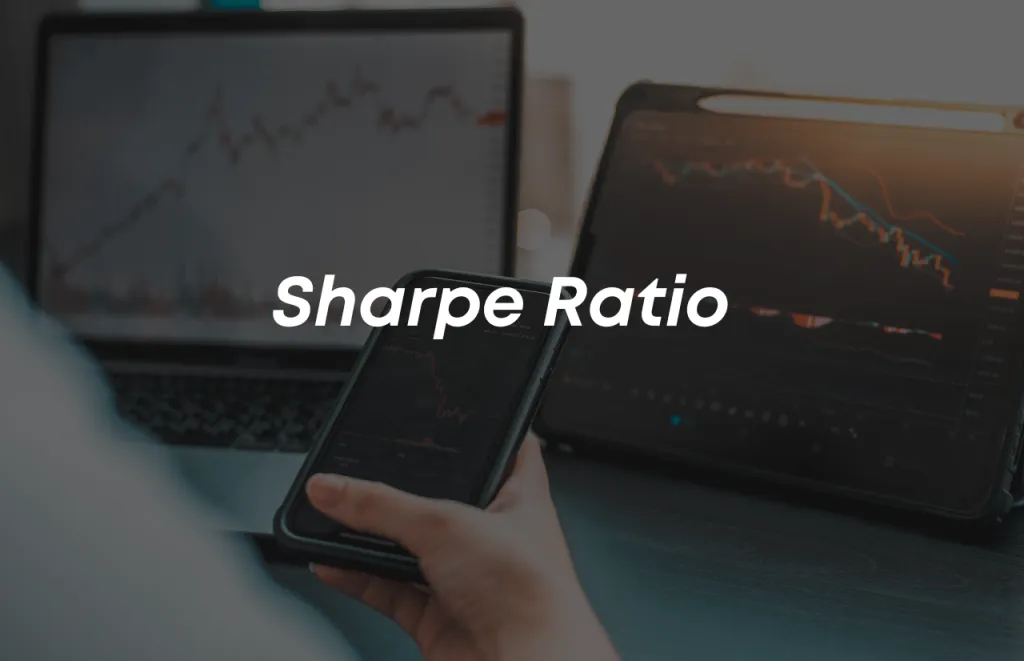What is Sharpe Ratio?

The Sharpe Ratio is a great way to measure the performance of an investment. It’s used to assess the average return on a portfolio relative to its risk. In other words, it helps investors determine if they are getting a good bang for their buck when choosing an investment option. In this article, we will cover what it is and how it can be used to make smart investing decisions. We’ll also tell you why it’s important and how you can calculate it yourself. Read on to learn more about this useful tool!
What is Sharpe Ratio?
The Sharpe Ratio is the difference between the risk-free return and the return on an investment divided by the standard deviation of the investment.
Simply put, it adjusts performance to account for an investor’s excess risk. However, the investor can use the Sharpe Ratio to determine whether the investment meets his needs.
It is also used to compare the performance of a specific share to the risk. It can compare two different funds with the same risk or return to assist an investor in determining how well he will be compensated.
A higher Sharpe Ratio indicates greater returns from a higher-level investment. As a result, investors seeking higher returns will invest in funds with a higher risk factors.
How to measure sharpe Ratio?
A mutual’s Sharpe Ratio can be easily calculated using a simple formula or by following the two steps outlined below:
1. Subtract a mutual fund’s risk-free return from its portfolio return or average return.
2. Calculate the excess returns by dividing the subtracted number by the standard deviation of the fund’s returns.
Standard Deviation: The standard deviation of an investment’s return differs from its principal return.
A high standard deviation indicates that there is a significant difference between the principal and investment returns.
For example
A fund’s annual Sharpe Ratio is 2.00. The fund’s total returns over the same time period will be 2.00%.
Funds with a higher standard deviation earn higher returns because their Sharpe Ratio is high. Funds with a low standard deviation, on the other hand, can earn a high Sharpe Ratio and provide consistent moderate returns.
It can be calculated on an annual or monthly basis. The Sharpe Ratio is calculated as follows:
Sharpe Ratio = (Average fund returns – Risk-free Rate) / Fund Standard Deviation
What is considered a good Sharpe Ratio?
Investments with a value less than 1.00 do not produce higher investor returns.
However, investments with Sharpe Ratios ranging from 1.00 to 3.00 are considered great Sharpe Ratios, while investments with Sharpe Ratios exceeding 3.000 are considered excellent Sharpe Ratios.
Importance:
In mutual funds, it is important for generating returns and recognizing risk. It assists investors in determining the risk level and adjusted return rate of each mutual fund.
This provides investors with a clear picture, allowing them to determine whether the risk they are taking is profitable.
Let’s take a look at some of the Sharpe Ratio’s benefits:
Analyze the performance of the fund.
It assists investors in gaining insight into the performance of a fund. Using this, investors can determine the level of risk associated with any fund in comparison to the additional returns.
It is primarily used to examine mutual fund operations with both growth and value strategies.

Helps in Fund Comparison
Beginners can compare the Sharpe Ratios of various mutual funds in order to analyse their risk factors and adjusted-return rates.
Investors Can Calculate the Risk Factor
Investors can easily calculate all risk factors before investing in mutual funds using this. Existing investors may also decide to transfer their investment if their current fund achieves a low Sharpe Ratio.
Study the Portfolio Diversification
It can be used by investors to determine the need for portfolio diversification. Assume an investor has a Sharpe Ratio of 2.00 in a fund; adding other funds to the portfolio would help reduce the ratio and risk factors.
Furthermore, it will increase returns. In the case of a fund with a Sharpe Ratio of 1.00, however, adding another fund to the portfolio may not be the best option.
Examine the Risk and Return Rate.
A fund with a higher Sharpe Ratio is considered excellent because it provides higher returns while also carrying a higher risk. As a result, investors seeking higher returns tend to select a fund with a high ratio.
It can, however, change the equation because a fund with 5% returns and moderate volatility is always preferable to one with 7% returns and high volatility.
Limitations:
Despite its many advantages, it has a few drawbacks, which are listed below:
- A fund’s Sharpe Ratio bears no responsibility for portfolio risk management and does not reveal whether the fund is dealing with a single or multiple factors
- It assumes that all investments have a normal pattern of return dispersion, but funds may have different dispersion patterns.
- It is influenced by portfolio managers. They can try to increase their risk-adjusted free returns by extending the time horizon used to calculate the ratio.
- It is used to evaluate a mutual fund that is not a good strategy.
Follow us on Instagram.









